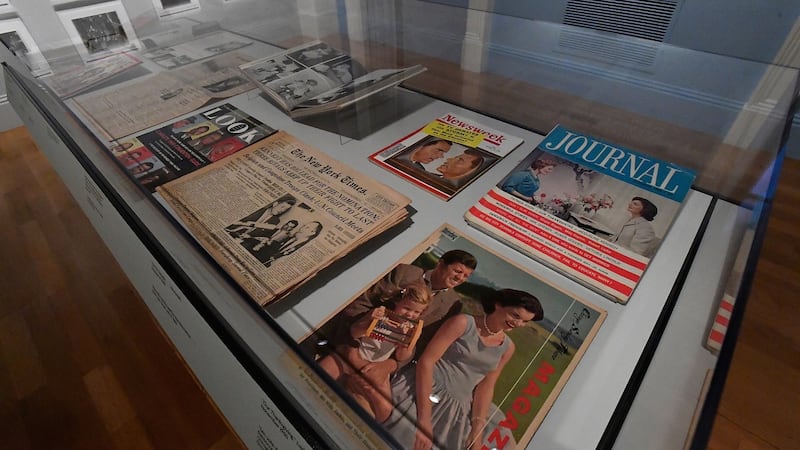As the world remains captivated by the continuing controversies involving the 45th president of the United States, memories of another US president are currently to the fore.
This week America marked the 100th anniversary of the birth of John F Kennedy, the 35th president. Elected to the White House on a wave of optimism in 1960, he was assassinated three years later during a visit to Dallas, bringing to a premature end the presidency of a man who to many epitomised the emergence of modern America.
A series of exhibitions, talks and TV documentaries are taking place across the country to mark the centenary of Kennedy’s birth, including in the nation’s capital, Washington DC.

Though most often associated with the New England milieu of Boston and Hyannis where he was born and raised, Kennedy had deep connections with the city that was his home during his decade-long political career.
It was in the wealthy Washington suburb of Georgetown that he courted his wife Jacqueline, then a journalist. Following his assassination, Kennedy’s body was flown back to Washington where he was laid out in the East Room of the White House before being moved to the US Capitol.
As the exhibition shows, Kennedy's presidency coincided with a golden age of photojournalism and the emerging power of TV
His funeral Mass took place in the Cathedral of St Matthew the Apostle, still one of Washington's main Catholic churches, near Dupont Circle, before his burial in Arlington cemetery. Millions of tourists make the pilgrimage to visit his grave just outside Washington each year.
One of many exhibitions taking place in the city to mark the centenary is at the Smithsonian American Art Museum. Titled American Visionary John F Kennedy's Life and Times, the exhibition is an attempt to present a fresh look at a man who continues to occupy a powerful place in the American imagination.
Through a presentation of more than 70 photographs taken from the John F Kennedy Presidential Library and Library Foundation, private collections and the archives of Getty Images, the exhibition seeks to get at the man behind the myth.
Shocking reality
As the exhibition shows, Kennedy’s presidency coincided with a golden age of photojournalism and the emerging power of TV – a medium that was to bring home the shocking reality of his death to millions of Americans when he was shot and killed on November 22nd, 1963.
Beginning with Kennedy's early years, the exhibition explores the different impulses and experiences that shaped his life. A sepia photograph of a young Jack Kennedy playing with his father in the ocean in the early 1920s is juxtaposed with an austere portrait of Kennedy's father Joe and his family during his time as ambassador to the United Kingdom, an experience that first sparked his second son's interest in world affairs, politics and journalism.

The distinctive, movie-star image of a shirtless Lieut Kennedy sitting on a boat in the South Pacific in 1943, wearing aviator sunglasses and bathed in sunlight, is a reminder of his heroic wartime efforts when he saved several crew members after their boat was hit by a Japanese destroyer.
The cut-and-thrust of the political campaign is also captured in a series of images that mark his political ascent.
One of the most striking photographs is a picture of Jackie Kennedy surreptitiously watching the fourth presidential debate between Kennedy and Nixon
A photograph taken in 1960 shows Kennedy appealing to steel-workers as he stands on the bonnet of a car during a campaign stop in Amherstdale, West Virginia. A more intimate piece captures the presidential hopeful quietly preparing a speech, pencil in hand, in a small room at a Democratic rally while a group of women peek in through a window.
Striking photographs
One of the most striking photographs is a picture of Jackie Kennedy surreptitiously watching the fourth presidential debate between Kennedy and Nixon from behind the stage curtain, the silhouette of her husband in the background.
While John F Kennedy was a man who understood the power of the image, there are glimpses of a reality trying to break through the carefully-constructed representation. A 1952 image from a campaign event in Worcester, Massachusetts, shows a 35-year-old Kennedy stooped and on crutches as he meets women at a campaign event with his mother and sisters.
A 1961 portrait portrays President Kennedy, hunched over his desk in the Oval Office with his back to his camera, a stance he adopted to alleviate the chronic back pain that plagued his life.
Ultimately, through a juxtaposition of rarely-seen photographs and some of the most famous images of the 20th century, this exhibition shows how difficult it is to ever pin down a life.
More than half a century after his death, the image and enigma of John F Kennedy remain as captivating and as elusive as ever.










